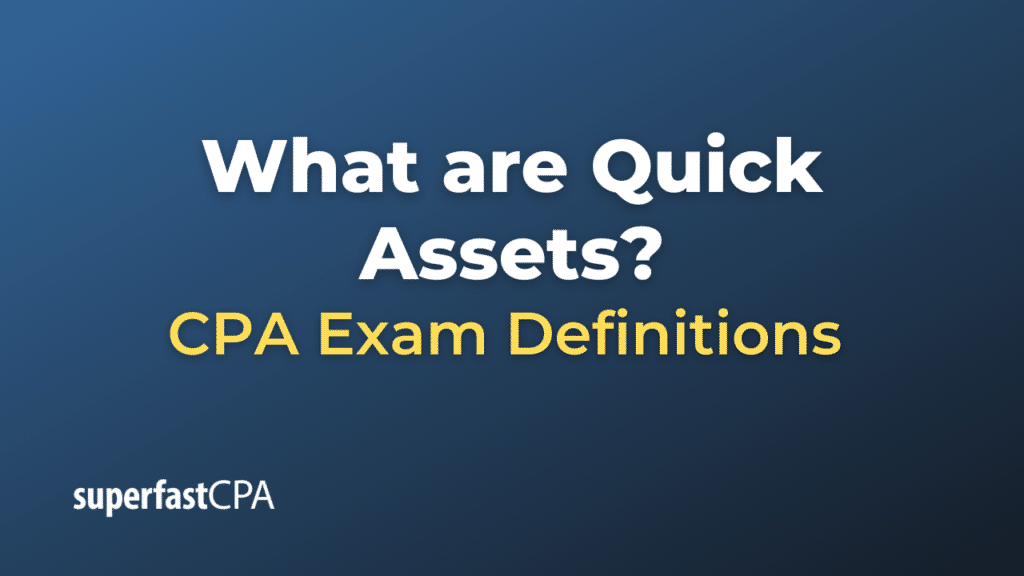Quick Assets
Quick assets refer to assets that can be quickly converted into cash or are already in cash form within a short period, typically 90 days or less, without losing their value. These assets are considered highly liquid and are used to measure a company’s short-term liquidity position, specifically its ability to cover its current liabilities without relying on the sale of its inventory.
The primary components of quick assets include:
- Cash: This includes currency and coins, balances in checking accounts, and other money market instruments that are readily available for use.
- Cash Equivalents: These are short-term, highly liquid investments that can be readily converted to cash with a minimal risk of change in value. Examples include Treasury bills and commercial paper.
- Marketable Securities: These are financial instruments like stocks or bonds that a company can quickly sell to convert into cash.
- Accounts Receivable: This refers to money owed to a company by its customers for products or services that have been delivered or used but not yet paid for. However, it’s worth noting that not all accounts receivable may be collectible on short notice, so sometimes an adjustment might be made to exclude doubtful accounts.
Inventory is excluded from quick assets because it isn’t always easy to liquidate on short notice without potentially incurring losses, especially if it has to be sold at a discount or if there’s limited demand for the inventory items.
The Quick Ratio (or Acid-Test Ratio) uses quick assets to gauge a company’s short-term financial health. It is calculated as:
Quick Ratio = Quick Assets / Current Liabilities
A higher quick ratio indicates a better position to cover short-term financial obligations using its most liquid assets.
Example of Quick Assets
Let’s explore a hypothetical example to better understand quick assets and the Quick Ratio:
XYZ Company’s Balance Sheet Excerpt:
- Current Assets:
- Cash: $10,000
- Cash Equivalents (e.g., Treasury Bills): $5,000
- Marketable Securities: $3,000
- Accounts Receivable: $7,000
- Inventory: $15,000
- Current Liabilities: $20,000
To determine the quick assets for XYZ Company:
Quick Assets = Cash + Cash Equivalents + Marketable Securities + Accounts Receivable
Quick Assets = $10,000 + $5,000 + $3,000 + $7,000
Quick Assets = $25,000
(Notice we did not include the inventory, which is valued at $15,000, when calculating quick assets.)
Next, to determine the Quick Ratio:
Quick Ratio = Quick Assets / Current Liabilities
Quick Ratio = $25,000 / $20,000
Quick Ratio = 1.25
This means that for every dollar of current liabilities, XYZ Company has $1.25 in quick assets. A Quick Ratio greater than 1 indicates that the company can cover its current liabilities without selling its inventory.
This example provides a simplified view, and in real-world scenarios, a company might have other considerations to factor in. However, the core idea remains consistent: Quick Assets are those assets that can be readily converted into cash, and the Quick Ratio provides an indication of the company’s liquidity position excluding inventory.













